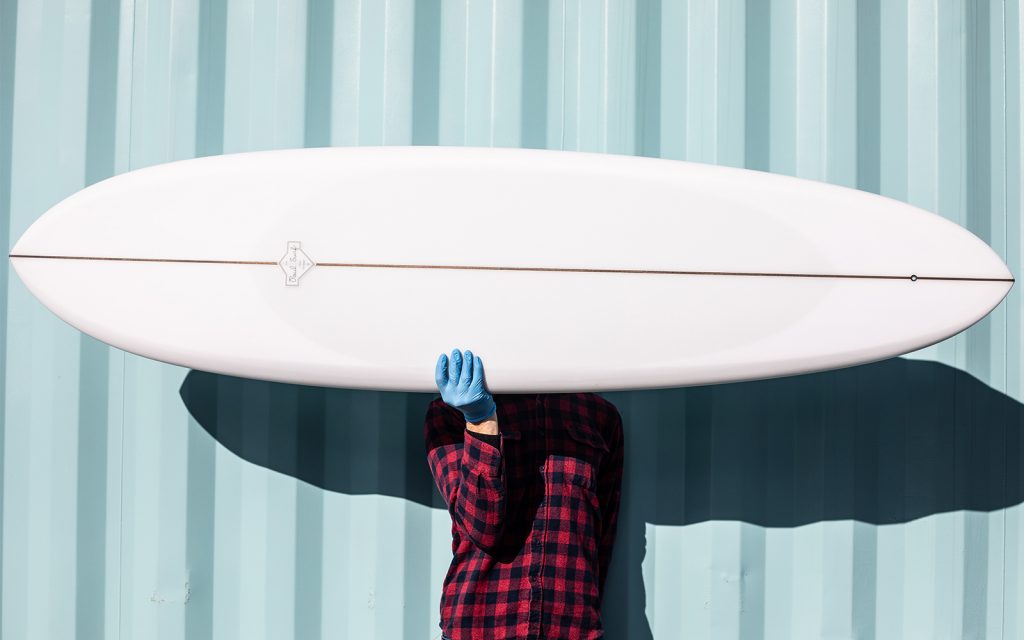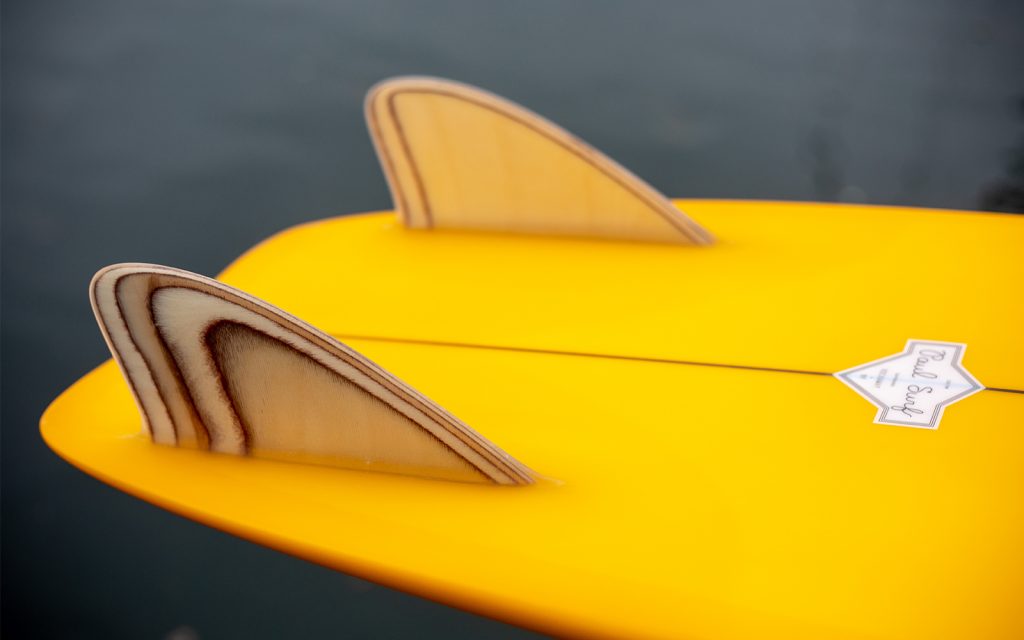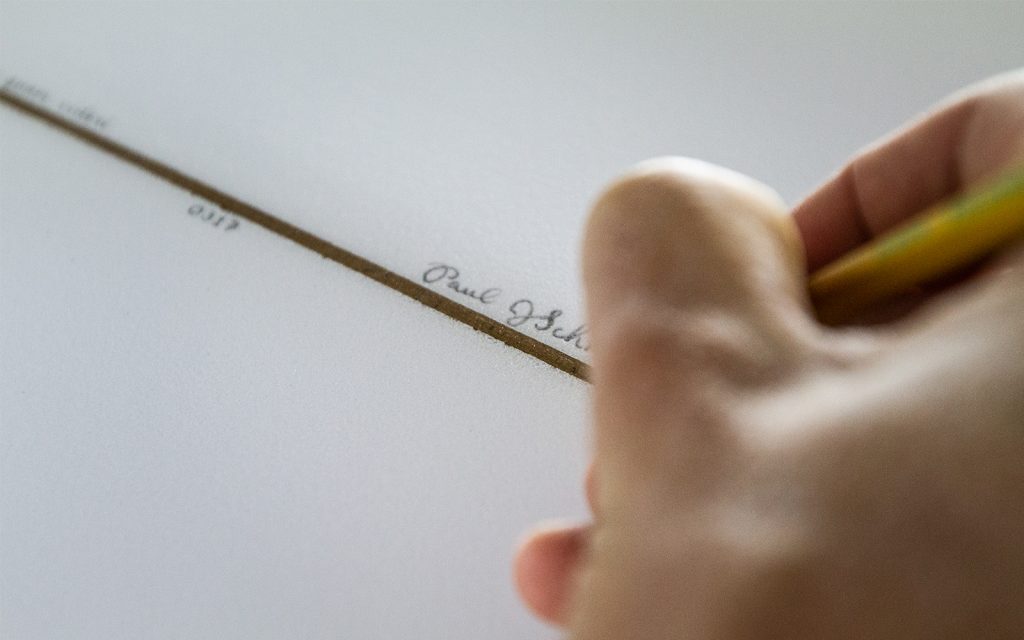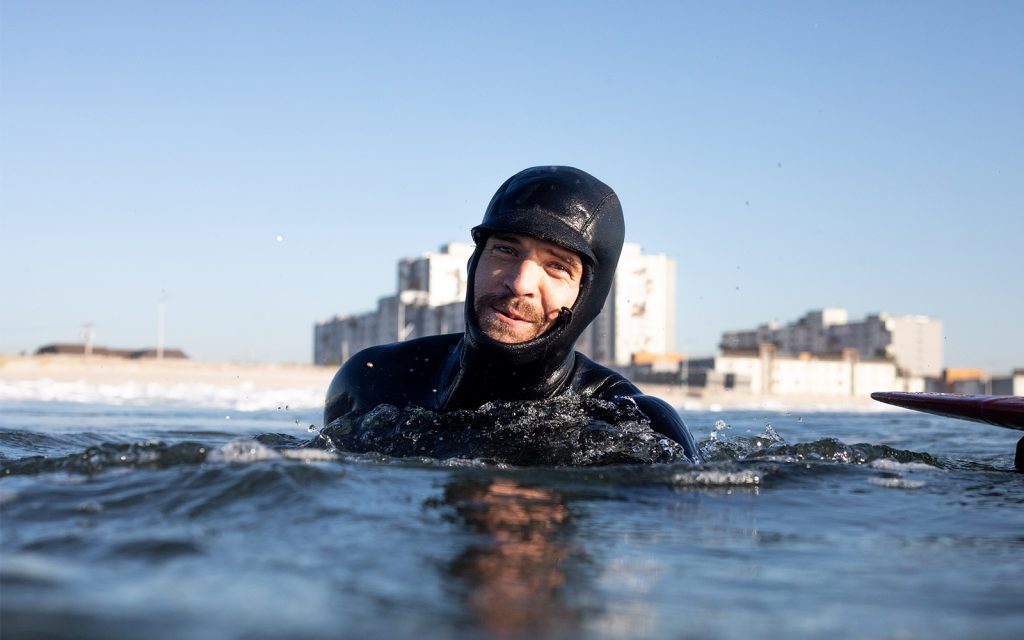Studio Visit: Surfboard Shaper Paul Surf
At Rockaway Beach, owner Paul Schmidt crafts boards that can be put to use just a few feet away

Inside of his shipping container studio at Marina 59 in Rockaway Beach, New York, Paul Schmidt crafts surfboards for friends and first-timers under the moniker Paul Surf. The process, which can takes upward of an entire day, demands precision and artistic prowess. For Schmidt, the desire to create things stems from seeing his dad do so too. “My father owned a construction company when I was growing up, so from a very young age I was surrounded by people building things,” he explains. “He and I were very close, and I always wanted to impress him with my work ethic and drive. This early drive to create with my hands has informed most of my path in my adult life—always finding this type of work to be the most fulfilling way for me to spend my days.”

When Schmidt moved to NYC a decade ago, he took a design job in Manhattan. At the time, it was what he wanted to do—create and do so in proximity to the ocean. But being in Manhattan didn’t suffice, and the beach lured him off the island. “The pull of the ocean was too great,” he says, “and after a few years I relocated to Rockaway, found some space to start shaping more seriously, and began to dream of how I could make this business sustain a life I had envisioned since I began surfing. My team and I definitely feed off the contagious energy nearby. We think it gives our brand a unique edge, and feel lucky to have the access to such immense diversity.”

The dichotomy of city energy and beachside zen runs throughout the brand—and Schmidt himself. There’s a relaxing energy to the marina he works on and the nearby beach community where he lives. In the studio, paint-filled cups clutter a table, sand and dust is inevitably tracked everywhere and people, most of whom are kind-spirited like him (and enjoy surfing too), come and go without fuss.

“My path to shaping began as a carpenter when I lived in Virginia, roughly 12 years ago. I was working with a master carpenter at the time and, only a few years earlier, had fallen deeply into an intense affair with surfing,” he explains. “I mentioned I was interested in making a wooden longboard, and the older man got just about as stoked on the project as I was. We did some research, drew up templates, bought the wood, and got to work. I ended up making a 10-foot single-fin log with his help, and through the process, learned how to better use many of the old woodworking tools which would later become integral tools in my shop.”

Since then, Schmidt has been honing his craft solo—wishing to shape, cut, glass, color and deliver his boards himself. But being a part of this new community (and this budding business), he’s learned plenty. “A board could have a world-class glass job, a perfect sand out and polish, but if the shape is off, all of the rest is just a pretty facade. It takes shaping hundreds of boards before one begins to really internalize and see certain lines and contours and how they all coalesce into a high-quality, functional surfboard. The average board will take a few hours to shape, and then it’s a long process of laminating, sanding, various coatings of clear resin and fin-setting, and then final sanding and polish.”
The Paul Surf boards that are available for purchase (custom and lesson-made ones too) have an impressive veneer, texture and strength to them. They’re empowering, artful and eye-catching—especially those that Schmidt applies vivid coats to.

“The surf industry has not been immune to the same trend toward planned obsolescence and single-use disposability that have saturated our culture,” he says. There are plenty of other places to buy a board, but Schmidt emphasizes the locality and quality that go into crafting one of his. “Walk into 98% of surf shops and you’ll find boards filed in the racks—cheaply produced, imported, and structurally inferior boards built to last a season or two. We build our boards with the intention that they can be, with proper care, surfed for a lifetime. This goal affects almost every aspect of the board-building process, from the materials we source to build them to our classic aesthetic designs. We think seriously about the construction of our boards and build them for the long haul.”

Not only is the construction superior, but Schmidt’s boards also have one artistic value that isn’t often seen elsewhere: he picks, mixes and applies every color by hand. “Color mixing is one of my favorite parts of the process,” he says. “Trying to tweak a tint slightly to achieve the desired smokiness or milkiness can definitely be time-consuming, but nailing the color someone has requested is exciting and always inspires a moment of stand-back-and-stare appreciation.”

“There’s nothing quite like it,” he says of seeing someone, himself included, hop on a board he’s made. “To see every step of the process through, from raw blank to the polishing compound in the sanding room, then to wax up the new shape and paddle it into waves a few blocks from the studio and my house in Rockaway… There’s a simplicity to this turn around aspect of the business that continues to captivate me year after year.”
Images courtesy of Paul Surf












